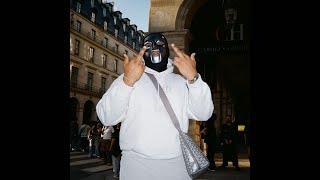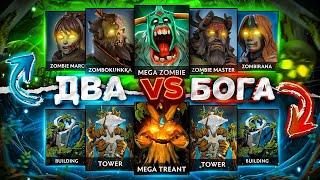
Pepsi: The Evolution of a Global Beverage Giant and Its Future.
Pepsi: The Evolution of a Global Beverage Giant and Its Future
Introduction
Pepsi, a name synonymous with cola beverages, has been in the limelight for over a century. Often viewed as Coca-Cola's primary competitor, Pepsi has crafted its own legacy through innovation, strategic marketing, and product diversification. This article examines Pepsi’s origins, its journey to becoming a global beverage powerhouse, its cultural impact, the challenges it has faced, and the future of the company in an evolving market.
1. The Birth of Pepsi: From a Pharmacy to a Global Brand
Pepsi’s story begins in the late 19th century, in 1893, when pharmacist Caleb Bradham from New Bern, North Carolina, created a drink called “Brad’s Drink”. The concoction, a mix of sugar, water, caramel, lemon oil, nutmeg, and other natural additives, was initially served as a refreshing tonic that helped with digestion and boosted energy. It wasn’t until 1898 that Bradham renamed his drink to Pepsi-Cola, reflecting its ingredients—pepsin (an enzyme that aids digestion) and kola nuts (which provided caffeine).
Caleb Bradham envisioned Pepsi as a health tonic, marketing it as “exhilarating, invigorating, and aids digestion.” However, Bradham’s initial success was followed by financial struggles during World War I, when sugar prices skyrocketed. By 1923, Bradham declared bankruptcy, and the Pepsi brand passed through several owners before being acquired by the Loft Candy Company in the 1930s.
2. The Rise of Pepsi: Innovation and Marketing
Under the leadership of Charles Guth, the president of Loft, Pepsi began to reposition itself. One of Guth’s most successful moves came in 1936 when Pepsi introduced the 12-ounce bottle for the same price as Coca-Cola’s 6-ounce bottle. This larger size offered consumers more value for their money and helped differentiate Pepsi in a highly competitive market. The slogan “Twice as much for a nickel” became one of the most famous marketing lines in soft drink history.
Pepsi’s focus on affordability during the Great Depression made it a favorite among working-class Americans. It also helped Pepsi survive a time when many companies faltered due to economic instability.
2.1. World War II and Post-War Expansion
During World War II, Pepsi, much like Coca-Cola, expanded internationally by establishing bottling plants overseas to supply American troops with its products. The war helped Pepsi lay the foundation for its global growth in the decades to follow.
2.2. The Cola Wars Begin
By the 1950s, Pepsi began to develop its distinct image, partly by targeting youth culture. With “The Pepsi Generation” campaign launched in the 1960s, Pepsi positioned itself as the cola for younger, more vibrant consumers, directly challenging Coca-Cola’s more traditional image.
The 1970s and 1980s saw the infamous “Cola Wars” between Pepsi and Coca-Cola escalate, as both companies competed aggressively for market share. Pepsi’s “Pepsi Challenge,” a blind taste test in which consumers preferred Pepsi over Coca-Cola, became a hallmark of this rivalry and helped the company gain significant attention.
3. Diversification: Beyond Cola
Pepsi’s success in the cola market allowed it to diversify beyond carbonated soft drinks. This expansion was led by the company’s merger with Frito-Lay in 1965, which created PepsiCo. The merger marked the beginning of Pepsi’s transformation into a food and beverage conglomerate. Frito-Lay’s popular snack brands, such as Lay’s, Doritos, Cheetos, and Tostitos, complemented Pepsi’s beverage lineup and allowed the company to offer consumers an integrated snacking experience.
PepsiCo continued to expand its product portfolio through acquisitions and innovations, adding brands such as Tropicana (juice), Quaker Oats (cereals and snacks), and Gatorade (sports drinks). Today, PepsiCo’s vast range of products includes snacks, beverages, and even health-oriented brands, with hundreds of offerings across the globe.
Introduction
Pepsi, a name synonymous with cola beverages, has been in the limelight for over a century. Often viewed as Coca-Cola's primary competitor, Pepsi has crafted its own legacy through innovation, strategic marketing, and product diversification. This article examines Pepsi’s origins, its journey to becoming a global beverage powerhouse, its cultural impact, the challenges it has faced, and the future of the company in an evolving market.
1. The Birth of Pepsi: From a Pharmacy to a Global Brand
Pepsi’s story begins in the late 19th century, in 1893, when pharmacist Caleb Bradham from New Bern, North Carolina, created a drink called “Brad’s Drink”. The concoction, a mix of sugar, water, caramel, lemon oil, nutmeg, and other natural additives, was initially served as a refreshing tonic that helped with digestion and boosted energy. It wasn’t until 1898 that Bradham renamed his drink to Pepsi-Cola, reflecting its ingredients—pepsin (an enzyme that aids digestion) and kola nuts (which provided caffeine).
Caleb Bradham envisioned Pepsi as a health tonic, marketing it as “exhilarating, invigorating, and aids digestion.” However, Bradham’s initial success was followed by financial struggles during World War I, when sugar prices skyrocketed. By 1923, Bradham declared bankruptcy, and the Pepsi brand passed through several owners before being acquired by the Loft Candy Company in the 1930s.
2. The Rise of Pepsi: Innovation and Marketing
Under the leadership of Charles Guth, the president of Loft, Pepsi began to reposition itself. One of Guth’s most successful moves came in 1936 when Pepsi introduced the 12-ounce bottle for the same price as Coca-Cola’s 6-ounce bottle. This larger size offered consumers more value for their money and helped differentiate Pepsi in a highly competitive market. The slogan “Twice as much for a nickel” became one of the most famous marketing lines in soft drink history.
Pepsi’s focus on affordability during the Great Depression made it a favorite among working-class Americans. It also helped Pepsi survive a time when many companies faltered due to economic instability.
2.1. World War II and Post-War Expansion
During World War II, Pepsi, much like Coca-Cola, expanded internationally by establishing bottling plants overseas to supply American troops with its products. The war helped Pepsi lay the foundation for its global growth in the decades to follow.
2.2. The Cola Wars Begin
By the 1950s, Pepsi began to develop its distinct image, partly by targeting youth culture. With “The Pepsi Generation” campaign launched in the 1960s, Pepsi positioned itself as the cola for younger, more vibrant consumers, directly challenging Coca-Cola’s more traditional image.
The 1970s and 1980s saw the infamous “Cola Wars” between Pepsi and Coca-Cola escalate, as both companies competed aggressively for market share. Pepsi’s “Pepsi Challenge,” a blind taste test in which consumers preferred Pepsi over Coca-Cola, became a hallmark of this rivalry and helped the company gain significant attention.
3. Diversification: Beyond Cola
Pepsi’s success in the cola market allowed it to diversify beyond carbonated soft drinks. This expansion was led by the company’s merger with Frito-Lay in 1965, which created PepsiCo. The merger marked the beginning of Pepsi’s transformation into a food and beverage conglomerate. Frito-Lay’s popular snack brands, such as Lay’s, Doritos, Cheetos, and Tostitos, complemented Pepsi’s beverage lineup and allowed the company to offer consumers an integrated snacking experience.
PepsiCo continued to expand its product portfolio through acquisitions and innovations, adding brands such as Tropicana (juice), Quaker Oats (cereals and snacks), and Gatorade (sports drinks). Today, PepsiCo’s vast range of products includes snacks, beverages, and even health-oriented brands, with hundreds of offerings across the globe.
Комментарии:
Pepsi: The Evolution of a Global Beverage Giant and Its Future.
General Information
Hustler Chainless XR1500 Demo, feeding round bales into a small square baler
Rhys Evans Farm Machinery
How to Use the Sprout Social Listening Tool
Minn Media
Metro Last Light Lenin's Mausoleum Easter Egg
Edmon Gómez
Honest Trailers | Dungeons & Dragons: Honor Among Thieves
Screen Junkies
THE OBEROI HOTEL Mumbai, India 【4K Hotel Tour & Review】The Flagship Icon
The Flip Flop Traveller


























